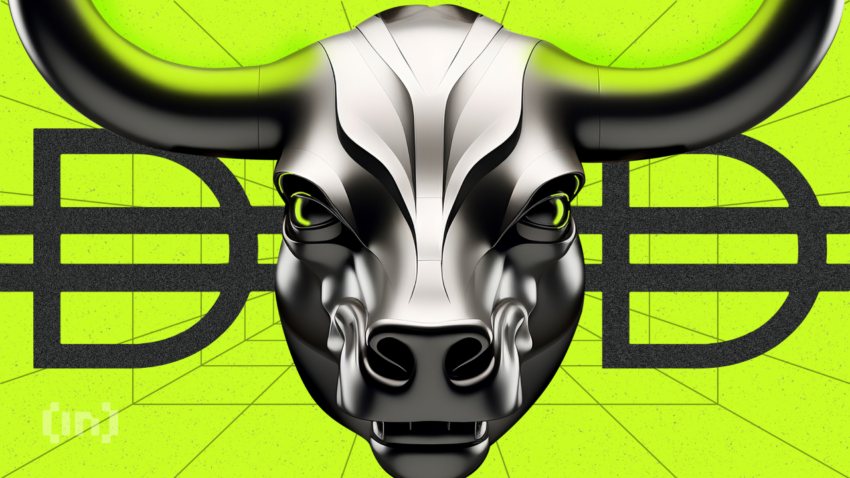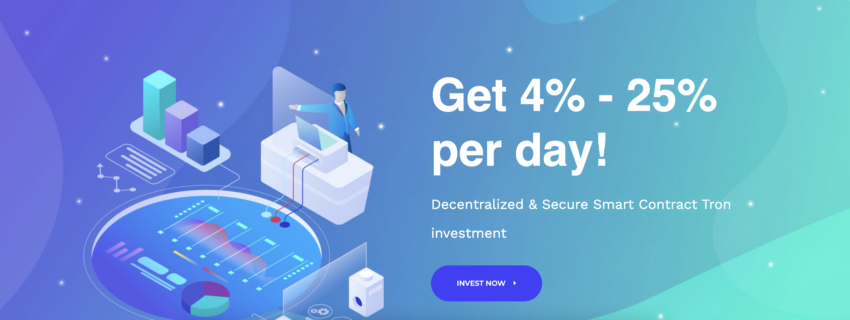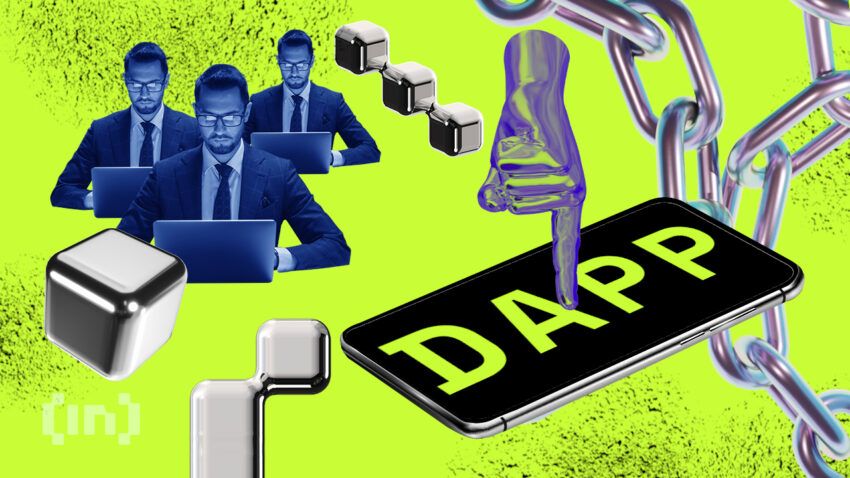Fifteen years after the launch of Bitcoin (BTC) in 2009, the cryptocurrency world has evolved significantly. In 2009, an individual or group known as Satoshi Nakamoto introduced Bitcoin, challenging the traditional financial system’s control over personal finances. This groundbreaking event birthed the cryptocurrency industry and laid the foundation for blockchain technology, which underpins the entire crypto world.
By 2025, this initial step will also catalyze the development of decentralized applications (DApps). Although it took several years for the full potential of DApps to be realized, it’s now clear that Bitcoin itself was an early form of a DApp. The intervening years have seen an explosion in the functionality and diversity of DApps, reflecting the maturation and expansion of the blockchain and cryptocurrency industries.
What are DApps?
Let’s start from the beginning and answer the question of what DApps are. The short explanation is that they are decentralized applications, hence the name DApps.
But what does that mean?
Decentralization is a big concept in the crypto, blockchain, and DApp industries. Basically, it means that no single entity has the authority but that the community does all the decision-making. Let’s take finances as an example. In the traditional finance industry, banks run everything. They issue money, process transactions, have the power to freeze and unfreeze accounts, and much more.
Of course, they are limited by the law of each country, and they are overseen by central banks, which have the power to issue additional rules as long as they are within the limits of the law.
In the blockchain space, everything is done by the community. The community runs the blockchain through group participation. Any individual or entity can participate, but they all have a say in what will happen, what kinds of changes will be introduced, and so on.
What are the most popular DApp platforms?

DApps, while now commonly associated with blockchain technology, actually originated from peer-to-peer (P2P) networks. Early examples include torrent clients and Popcorn Time, managed by communities rather than centralized authorities. However, with the growing popularity of cryptocurrencies and blockchain projects, the term “DApp” has become closely linked to these sectors.
Speaking of blockchain DApps, Bitcoin stands out as the pioneer. Despite being a full-fledged cryptocurrency and blockchain, it also functions as a DApp for transactions and payments. Initially, all crypto projects were essentially single-purpose DApps until the advent of Ethereum (ETH). Ethereum marked a paradigm shift by focusing on cryptocurrencies and creating decentralized ecosystems using them.
This approach allowed for the running of these ecosystems and their components, such as DApps.
Following Ethereum’s lead, several blockchain projects like EOS (EOS), TRON (TRX), and Cardano (ADA) have emerged, each attempting to enhance and simplify the concept introduced by Ethereum. While these projects offer certain advantages, Ethereum remains the oldest, largest, and most used platform for DApp development. It provides a versatile environment for creating a wide range of applications, from specific DApps to new cryptocurrencies, decentralized exchanges, and beyond.
Top DApps in 2025
We’ll delve into the most prominent and widely-used DApps of 2025. These applications have gained immense popularity and revolutionized our interaction with blockchain technology, offering innovative solutions and user experiences.
1. CryptoKitties
CryptoKitties, an Ethereum blockchain-based DApp, stands out as one of the earliest and still popular Ethereum DApps. First captivating users in 2017, it is an accessible entry point for those new to decentralized technology.
CryptoKitties is a straightforward game where players buy, breed, and sell digital kitties for a profit. Its allure lies in its decentralized nature, the fun it offers, and the opportunity to earn cryptocurrency through sales. At its peak, CryptoKitties accounted for about 10% of all Ethereum transactions, a significant figure given Ethereum’s status as the second-largest and one of the most trusted projects in the crypto industry. This success positions CryptoKitties as a potentially enduring top application on the Ethereum platform.
2. MakerDAO

MakerDAO is arguably one of the most successful projects on Ethereum’s entire blockchain. This is a decentralized platform dedicated to issuing stablecoins, that is basically created on the concept of lending.
The way it works is that users can come to the platform, deposit a certain amount, and receive the same value in cryptocurrency. The deposited amount backs the cryptocurrency, and it is pegged to it so that its value remains the same as the USD, for example, although it provides greater possibilities.
Those include instant payments, low transaction fees, immutability, transparency, and more.
There are numerous other crypto lending projects out there these days. However, one thing that made it stand out is that all operations are completely decentralized. In other words, neither the user nor the project itself requires a third party in the form of a centralized firm to do anything.
Instead, in the spirit of blockchain and crypto, MakerDAO has a governance system that uses smart contracts to regulate all operations and the stability of the issued stablecoins.
Of course, there is still an interest that people have to pay while paying their DAI debt. This interest is also completely transparent and controlled by the Maker tokens’ decentralized network.
Highlights of MakerDAO:
- Increased transparency
- It has its DAI token, which is the only censorship-resistant stablecoin
- Available around the world
- Supported by wallets
- Great privacy elements
- Decentralized organization
3. Bank of TRON

Next up, we have Bank of TRON, which is a DApp based on the TRON blockchain, and it falls under the category of high-risk apps. Interestingly enough, it is not one of the gambling apps, which are typically the most popular ones on TRON. Regardless, this is a DApp with the highest number of daily active users, with around 12,220 of them.
Bank of TRON is a DApp that is fully automatic. It runs on TRON blockchain, and it uses smart contracts of the TRON ecosystem. These smart contracts cannot be edited, deleted, or influenced in any other way.
The bank also pays dividends to users automatically by using smart contracts. It supposedly provides high referral rewards, rewards for investments, and more.
Highlights of Bank of TRON:
- TRON’s most popular app, judging by the number of users per day
- Fully automatic
- Based on smart contracts, meaning that it is immutable
- Users receive dividends, referral rewards, and more
The next chapter in Dapps: What lies ahead?
There are thousands of DApps out there in the blockchain industry, many of which belong to different categories than the ones we mentioned there. There are also many different blockchain projects dedicated to DApp development, although we chose to list some of the most popular DApps on some of the most popular blockchains.
The DApp sector is growing, people are getting used to it, and someday, there is a good chance that they might completely replace typical, centralized apps that we know and use right now.
Frequently asked questions
Which are the most popular DApp platforms, and how do they differ?
What are high-risk DApps?
How can I earn on DApps?
What is the growth rate of the most popular DApps?
Disclaimer
In line with the Trust Project guidelines, the educational content on this website is offered in good faith and for general information purposes only. BeInCrypto prioritizes providing high-quality information, taking the time to research and create informative content for readers. While partners may reward the company with commissions for placements in articles, these commissions do not influence the unbiased, honest, and helpful content creation process. Any action taken by the reader based on this information is strictly at their own risk. Please note that our Terms and Conditions, Privacy Policy, and Disclaimers have been updated.





